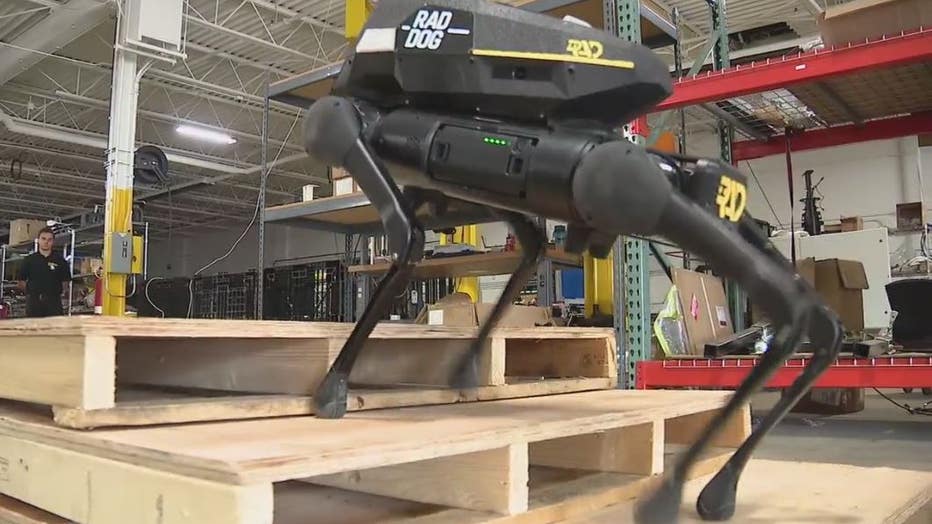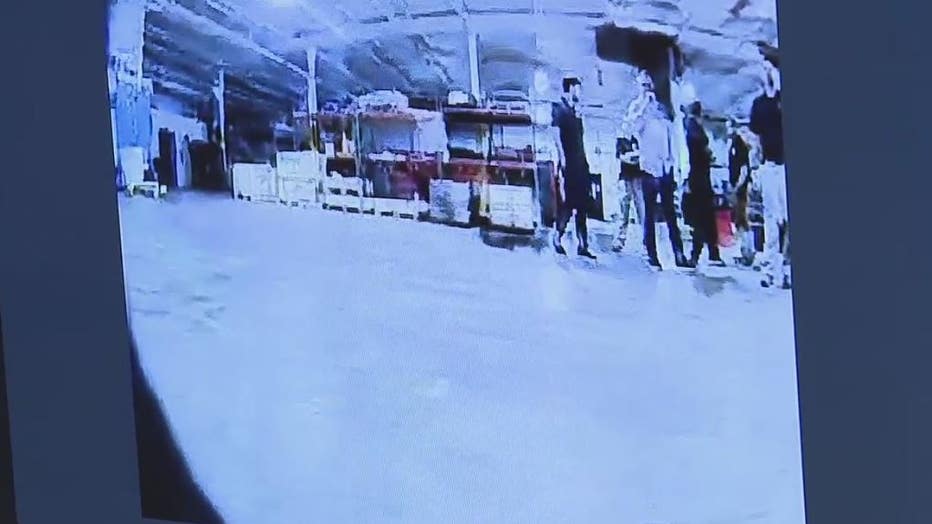Robot dog could be the newest recruit for local law enforcement
Metro Detroit police departments mull adding robot dogs to the force
On Thursday, variations of the robot performed in Ferndale in front of local law enforcement.
FERNDALE, Mich. (FOX 2) - Artificial Intelligence is quickly taking over so many aspects of life -- and it looks like law enforcement could be next.
The newest member of your local police force-- might just be a robot.
"At some point in the future officers have an autonomous robotic partner, maybe it’s in the form of a quadrapet, maybe its in another form, but that’s how I see police evolving," said Steve Reinharz, CEO Robotic Assistance Devices and AITX.
Meet the future of law enforcement, the AI robot dog also known as RADDOG.
"I’m really excited about this," said Brownstown Township Police Chief Jeff Watson.
You may have seen this popular "bot" on the new FOX reality show "Stars on Mars." But on Thursday, variations of the robot performed in Ferndale in front of a different audience, local law enforcement.
After the products are developed at the company's headquarters in Waterloo, Ontario, they're shipped to a facility in Ferndale. From there, they are sent to businesses serving at logistic center checkpoints and car dealerships.

"We’re always looking for technology that puts a barrier between our officers and danger," said Watson. "And I can see several applications especially when it comes to hostage negotiations and crisis intervention, where this would allow face-to-face communication between our negotiators and the defendant without putting (either) in danger."
Robotic Assistance Devices known as "RAD" put RADDOG 2LE to the test. RADDOG 1LE also stretched its legs. They’re both part of this Artificial Intelligence dog pack.
Read More: Robot guard dog unleashed in Ferndale
These four-legged bots are designed to maximize what law enforcement is already doing, and then some. They can assist with a variety of practical tasks and by design, are able to tackle challenging and even potentially dangerous environments and missions.
"The preliminary comments from the law enforcement officers that are invited was overly positive and I think they’re looking for a solution like this," Reinharz said.
It all comes down to the advanced technology.

"Two-way video calling off the face of the dog, what that allows is de-escalation when we are communicating with people versus people," Reinharz said. "So that’s a huge deal number one. Number two, it provides a degree of mobility to get devices into tight spaces such as a barricaded location or something like that. Number three it provides situational awareness to the officers so we can better judge what’s happening if we need to take additional steps."
RADDOG 1LE has an interactive touch screen equipped with high-definition video communication between remote officers and those nearby. It also has state of the art microphones, speakers and headlights.
"The fact that this looks and moves like a dog provides a level of de-escalation just there," said Watson.


